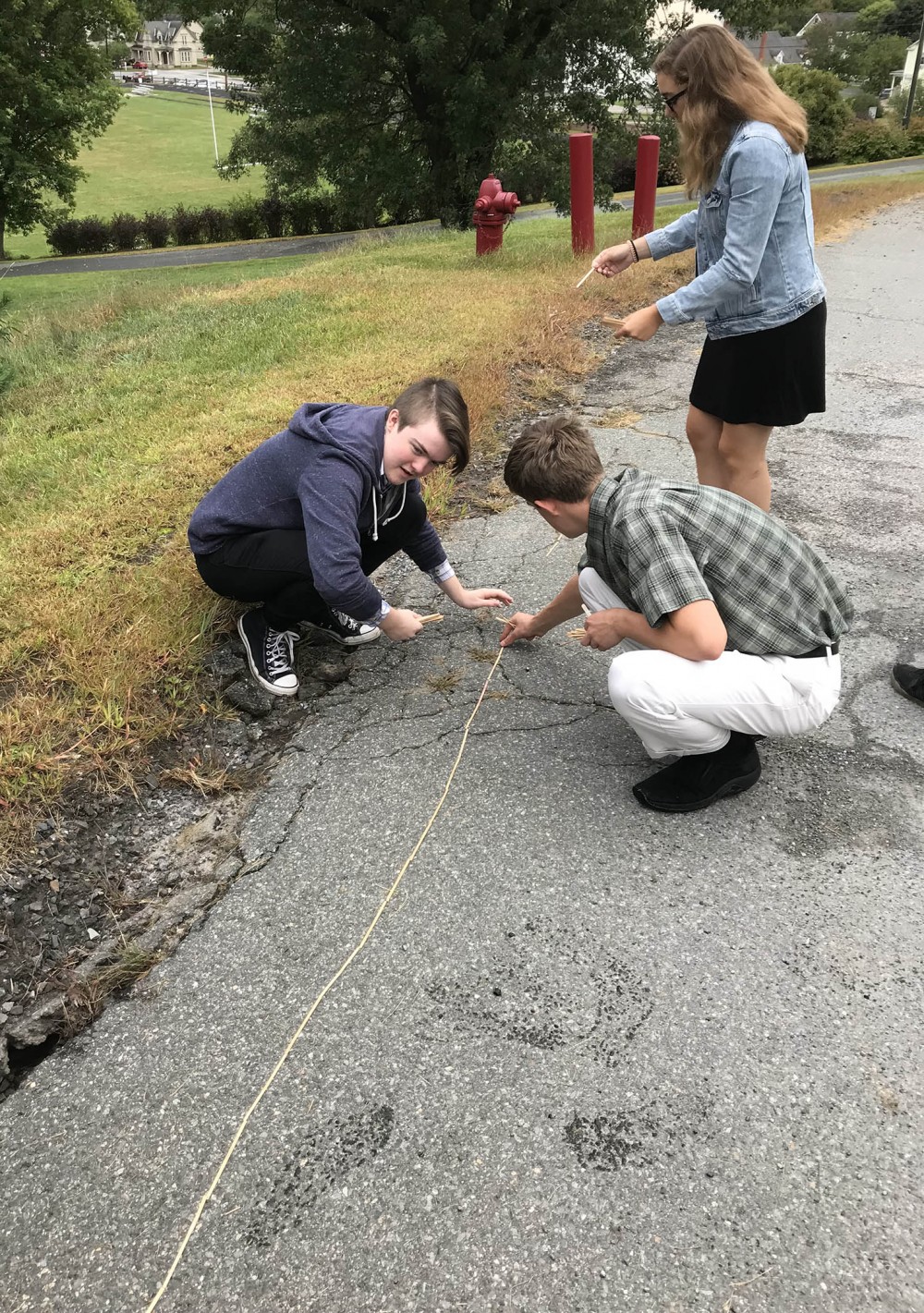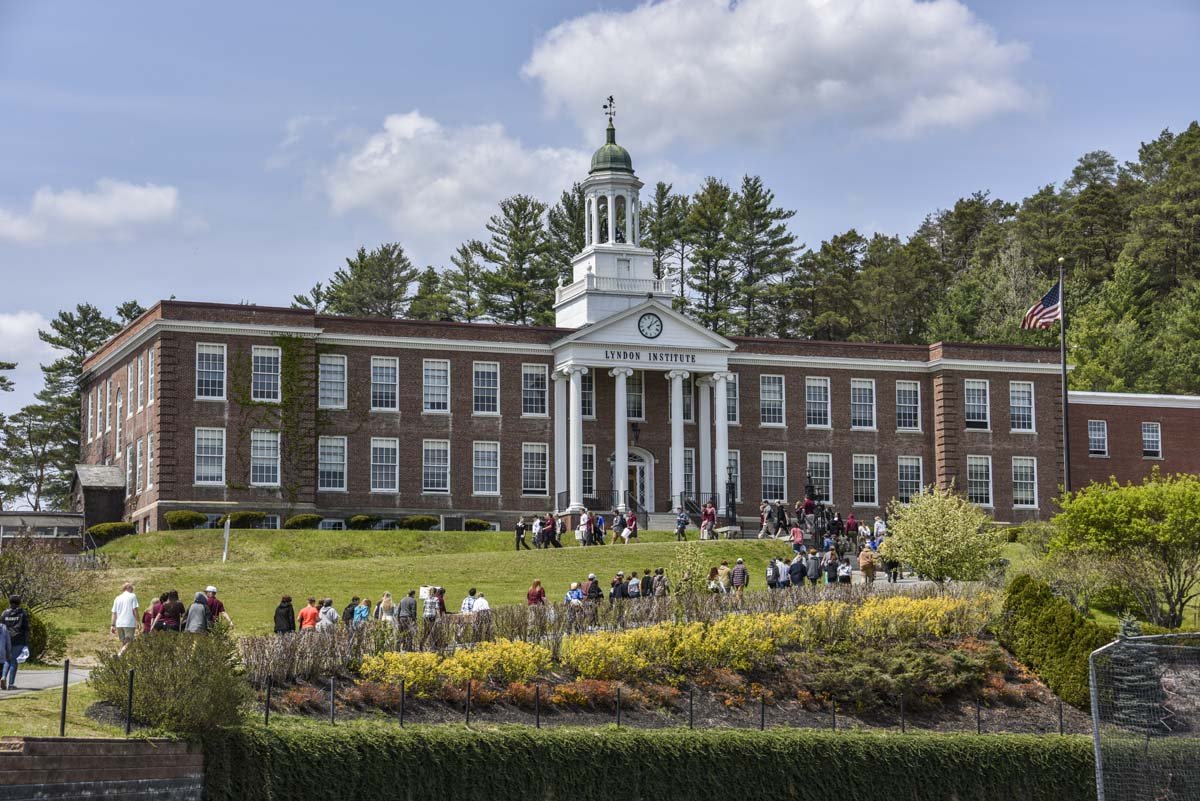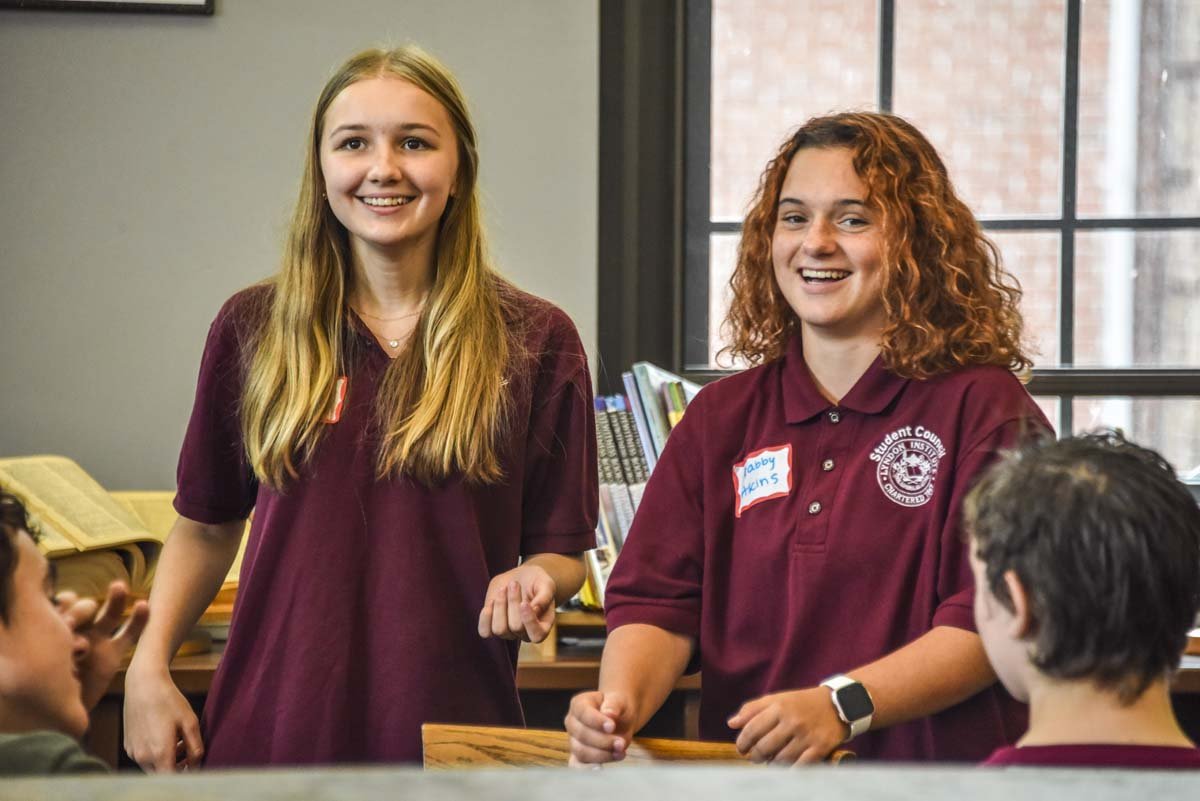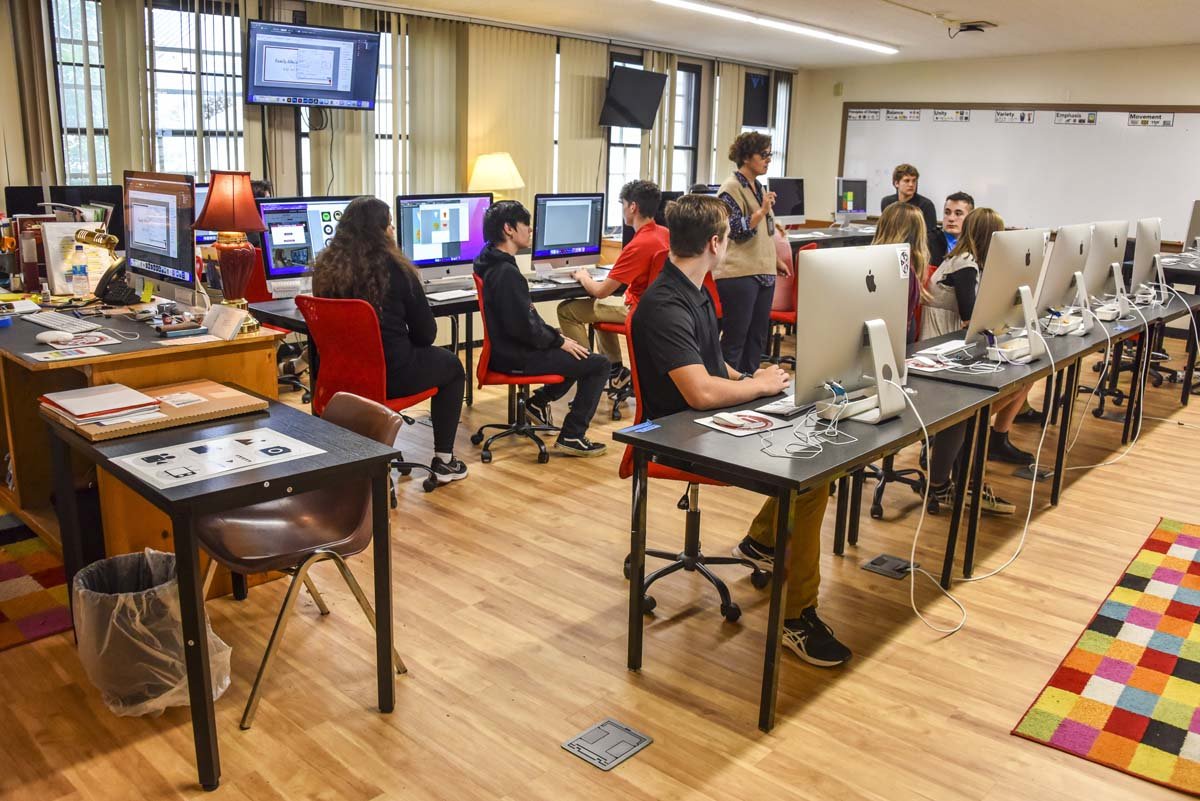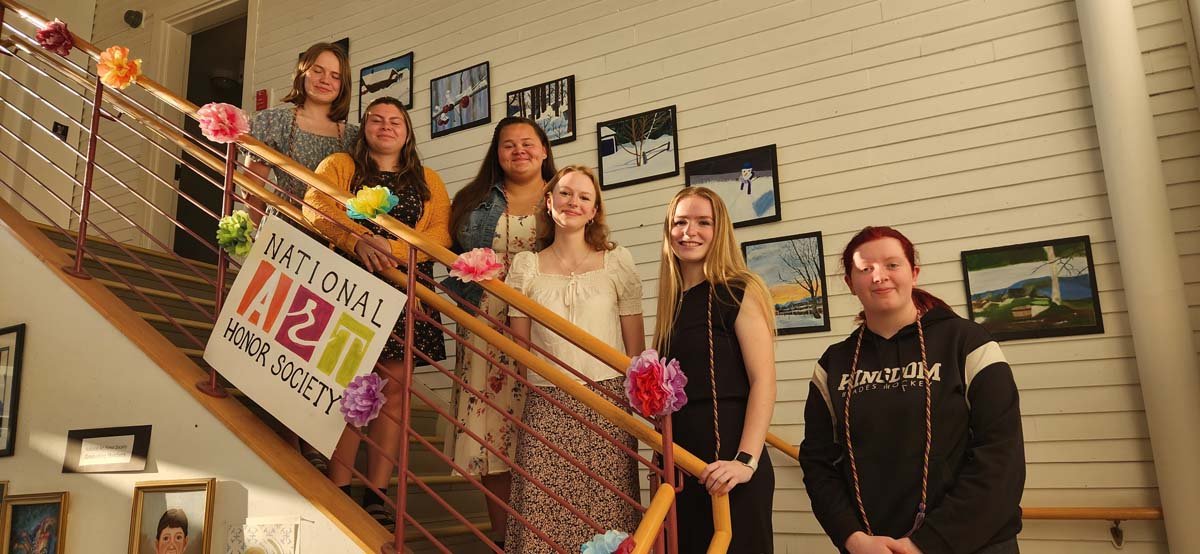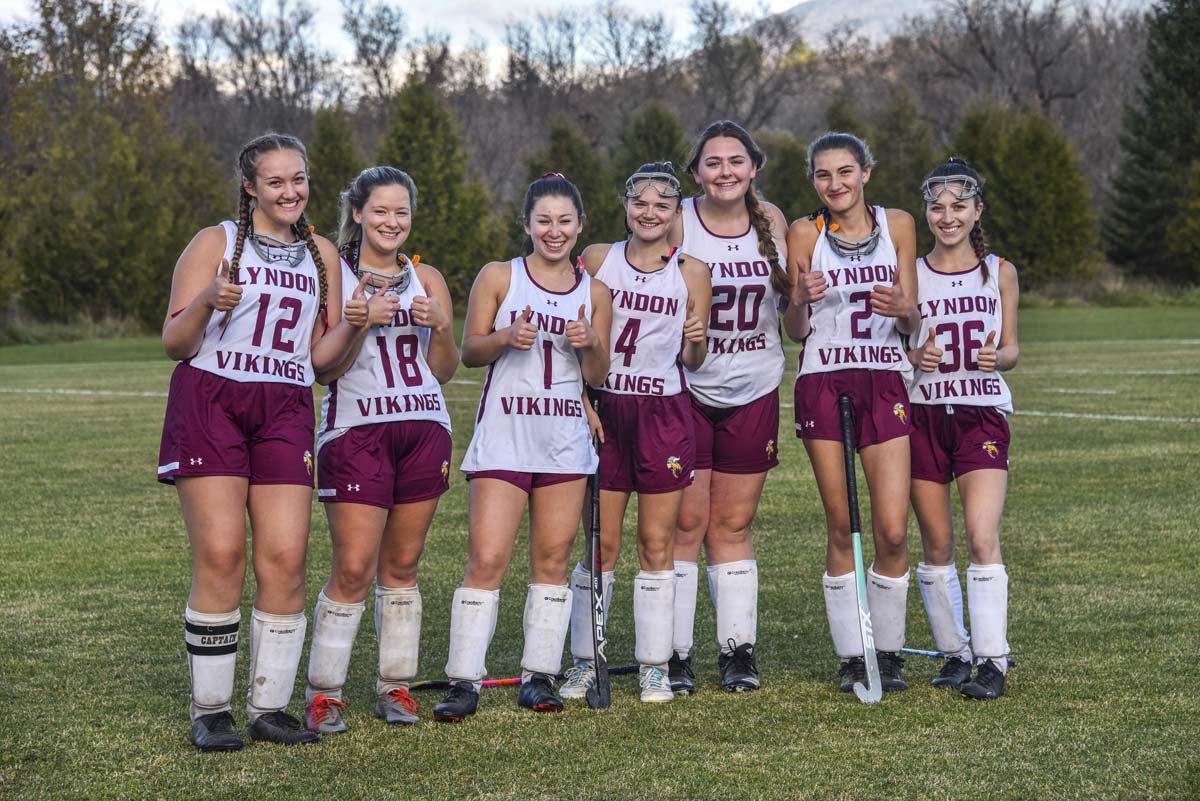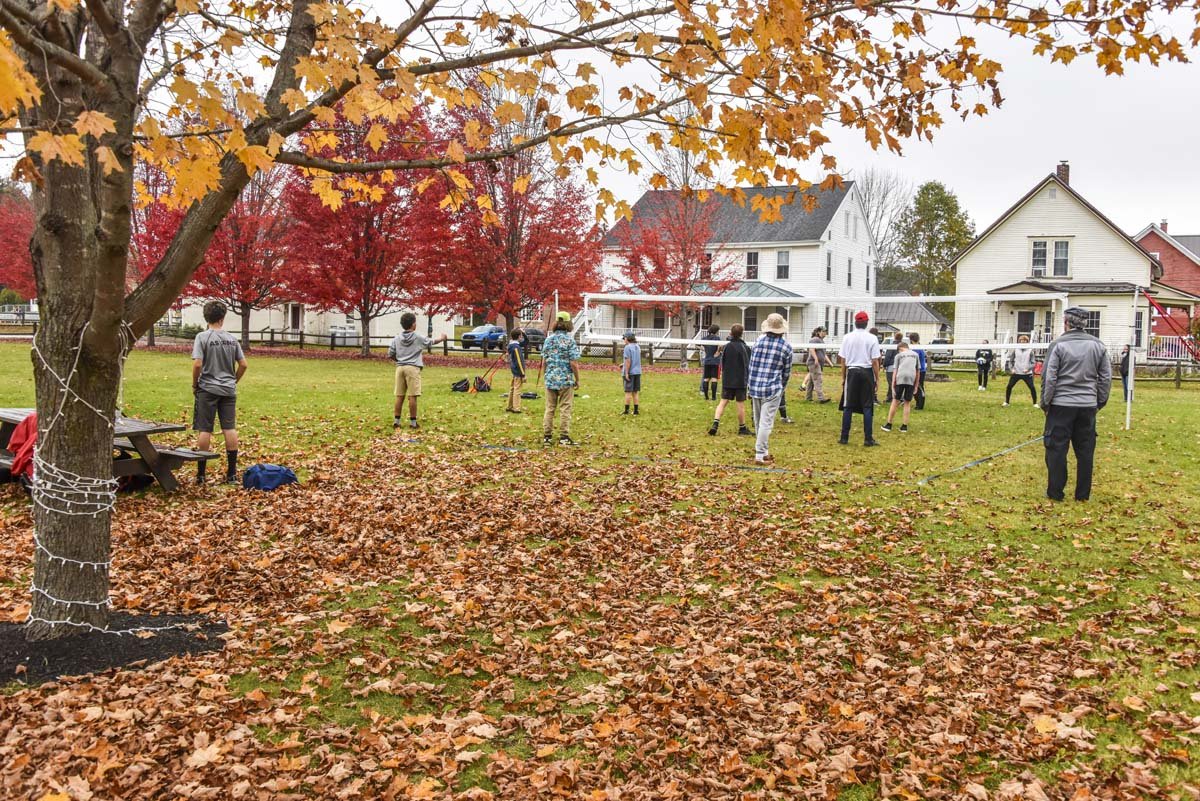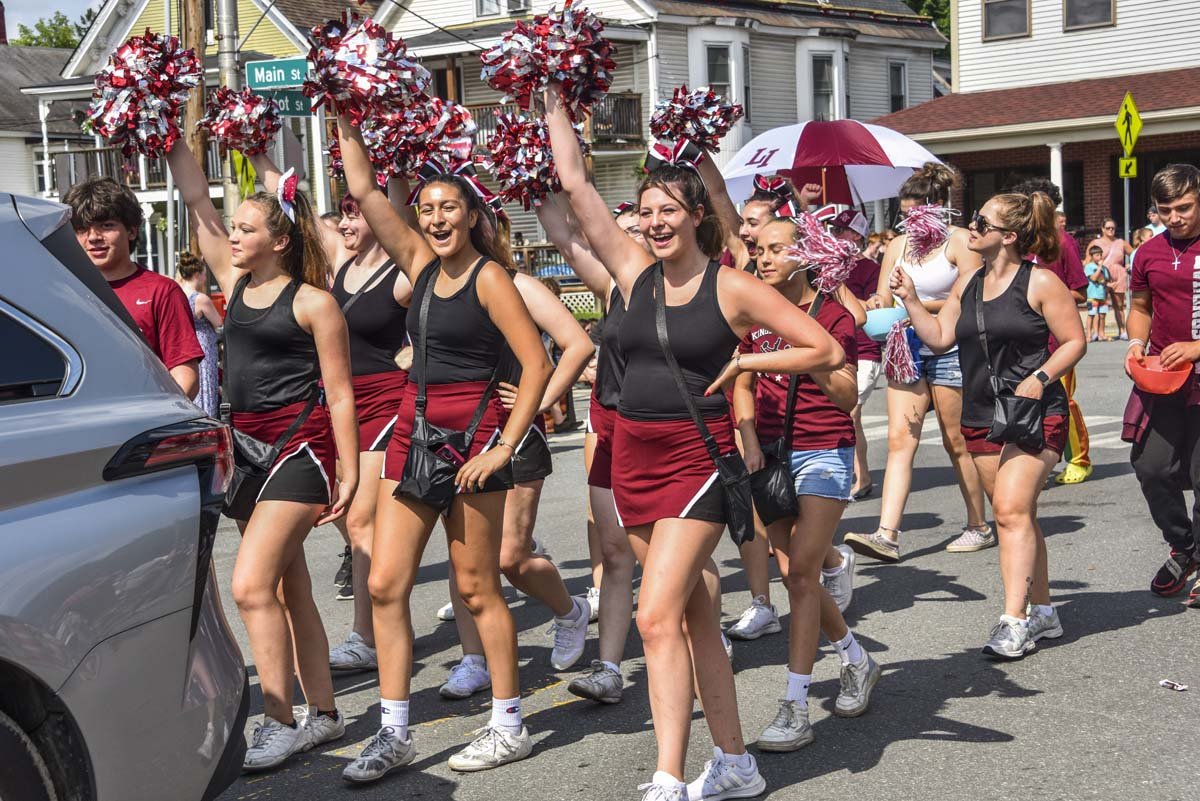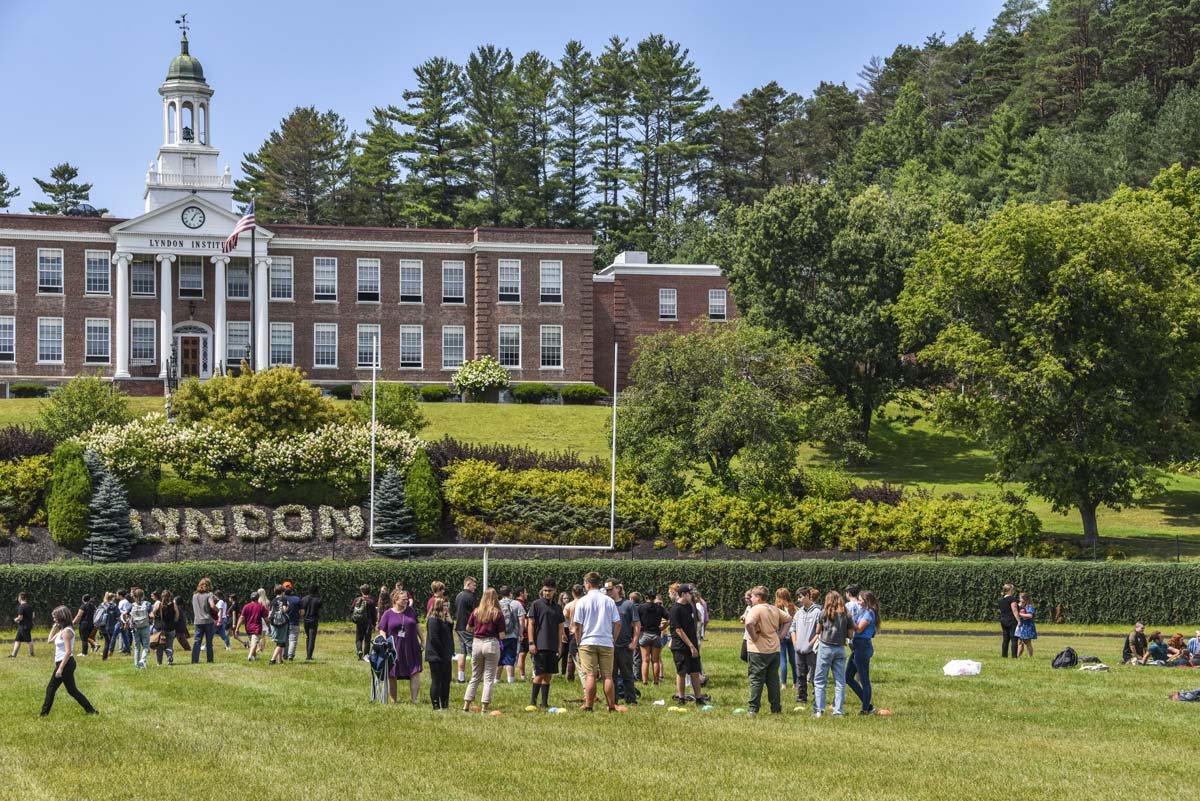- Our School
- Admissions
-
Academics
- Divisions and Faculty
- Commencement 2024
- January Term
- International Program (ESOL)
- College and Career Counseling
- Upward Bound
- Library/Monahan Academic Commons
- Career/Technical Education
- Lyndon Learning Collaborative
- Flexible Lyndon Institute Pathways (FLIP)
- Specialized Instruction
- Adult Continuing Education
- Lyndon Institute Course Catalog
- Student Services
- Arts
- Athletics
- Campus Life
- Support LI
- Alumni
« Back
Class Acts: A Stick In Time
October 8th, 2020
By: David Stahler Jr.
Sometimes, a stick is more than just a stick. This is especially true in Social Studies teacher Kathy Smith’s sophomore honors class every fall.
One of the challenges social studies teachers face is getting students to understand the passage of time and the context of history. Time is an abstract concept that even adults can struggle with, but for a fifteen-year-old, it can be especially hard to grasp how one’s life fits into the broad expanse of history. So one of the first activities Smith has her sophomore honors students tackle in the opening weeks of class is the construction of a timeline. And not any old time-line--no pieces of graphing paper marking out the centuries, no imaginary clock to reflect the minutes or seconds of recorded history. Smith’s approach is big. Big enough to give students the kind of visual context that leaves an impression.
This is where the sticks come in. Students are shown a box of wooden coffee stirrers. The challenge? To use these slender strips to represent the breadth of history, starting in 500,000 B.C. during the Paleolithic era of pre-recorded history all the way to the present. Each 5” stick represents 1000 years. The students’ first job is some simple math: calculate the number of sticks needed to represent the timeline (502!), then figure out what each inch represents in years (200). From there, students are given a new stirrer and must zoom in even further and take the next leap--how much of their stick represents the measure of their own lives?
Not very much, as it turns out--a mere sliver, which they mark with a line in pencil or pen before signing their name to the stick.
These sticks are added back to the box, and then the real fun begins. Smith brings the students outside. Starting from a light pole at the far end of the main building near the cafeteria entrance, students line the stirrers up end to end, all 502, along the edge of the drive. Part of the fun, of course, is seeing all the signatures of former students on the sticks. Some elicit a cry of recognition--the names of siblings, cousins, friends. Others have been lost to time. The line stretches all the way along the front of the school past the steps of the columned front entrance.
The length is impressive, but it’s what comes next that really makes the students step back in awe.
Smith asks the students, “What is history?” After some discussion, the consensus is that our idea of history primarily encompasses events beginning with the appearance of written records in roughly 3500 BC. Smith then gives the students slips of paper, each with the name of an important historical event--The Fall of Rome, The Aztecs’ Construction of Tenochtitlan, The Black Death--and its corresponding date. Students must place their slips on the appropriate spot in the timeline. It doesn’t take long for the students to realize all their slips are jumbled together along the last handful of sticks, a mere two feet at the end of a line stretching almost 70 yards.
“It’s quite shocking for them to realize that events that seemed part of a distant past are, in the framework of human existence, not far away at all.”
From there, the discussion goes even deeper. How do we know what happened before the start of recorded history? What is our relationship to these events in the context of time? What is the meaning of our own place in time? Students follow up on these questions through written personal reflections.
“Many students’ first reaction is how small they suddenly feel when they realize they are one line at the end of one stick at the end of 502 sticks,” Smith says. “‘My life is meaningless!’ they’ll cry. ‘No!’ I tell them. I want them to understand the opposite is true. We talk about how lucky it is they are here at all--how many of their ancestors had to survive war, famine, predation, natural disasters for them to exist. One moment of misfortune and the chain is broken.”
“The real question is not ‘what is your place in time?’” she adds. “It’s ‘what do you want your place in time--this precious gift--to look like? How can you make the most of it?’”
Smith got the idea for the project over twenty years ago from a colleague she co-taught a humanities class with at North Country High School before returning to work at her alma mater. Now, several of her former LI students who have gone on to become social studies teachers themselves--people whose names can still be found among the sticks--have incorporated the activity into their own curriculum. The tradition is passed on; the timeline continues.

Photo caption: Lyndon Institute students Athena Jurentkuff (kneeling left), Tobias Ham (kneeling right), and Emily Antonucci (standing) participate in teacher Kathy Smith’s history timeline exercise in this file photo from 2018. This exercise involves laying out 502 five-inch sticks to represent the breadth of history starting in 500,000 B.C. to the present day. Each five-inch stick represents 1000 years on the timeline. The students are then asked to find where on the timeline significant human events have occurred which appear on only the last two feet of the physical timeline spanning 70 yards.
Posted in the category Front Page.

